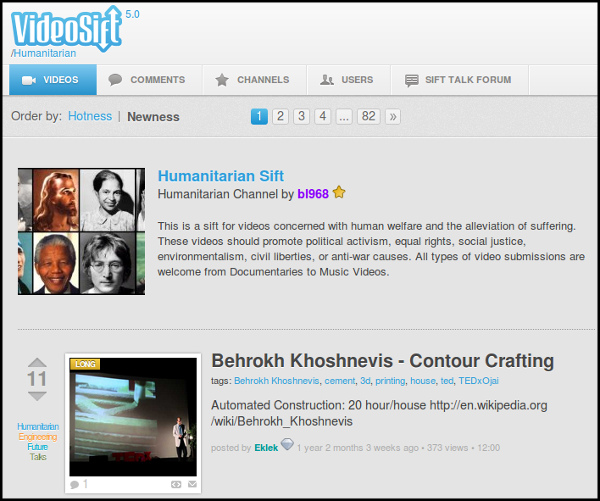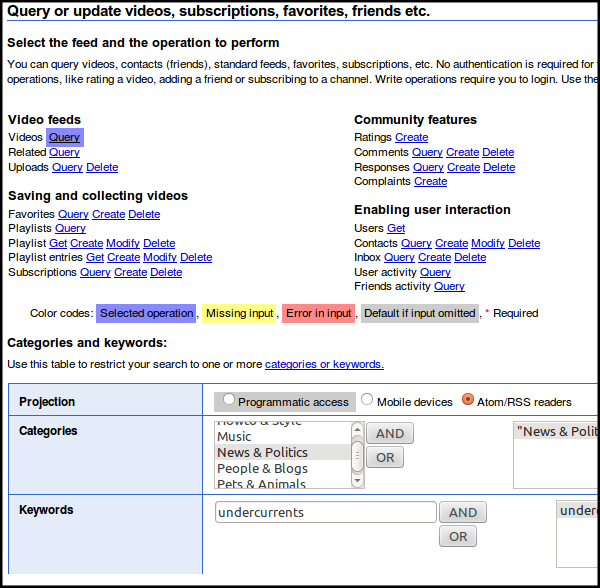Hosting your own Video Site
Aggregation of Video
The process of 'aggregation' in this context refers to different ways of bringing together disparate sources of videos and presenting them in one place. Aggregation also often indicates a degree of automation to this process.
For example, imagine your organisation wants to support a campaign by reposting a series of 16 daily videos on your website. Instead of fetching one video each day and embedding it into a new page on your website, wouldn't it be better to find a way of doing this automatically? This is what people would commonly refer to as 'aggregating video' to your website.
Examples of Video Aggregation Websites
Commercial video aggregation services: These sites can be a useful way of finding video on subjects you are interested in.

Videosift is one of the few remaining commercial video aggregating services driven by users: http://videosift.com/humanitarian
Community video aggregation services: Some services (including Miro Community) provide a simple way to pull together and present the videos of you and your partners.

An example of an aggregator site using Miro community: http://www.swanseatelly.org/
Set up your own video aggregator: Frameworks like Drupal and Wordpress allow a more flexible approach to what data is aggregated and displayed. This is perfect for a network of video collectives to represent the work of their disparate members.

An example of a video aggregation site for social justice at http://transmission.cc
The Mechanics of Aggregation
Aggregation can work in a number of different ways.
RSS Feeds & Video Podcasts: An RSS feed is a simple and standard way of getting content from A to B on the Internet. Originally very popular for news, it has been adopted for multimedia in the form of podcasts.
APIs: Many modern website have an API as a way of allowing outside sites to interact with the core site. This is true of websites like YouTube and Twitter. While there are advantages to APIs, they are not official web standards and, as such, they may change in the future.
OEmbed: OEmbed is a useful way to aggregate video by making it easy to use 'embed codes' remotely. OEmbed does this in a standard way so it is unlikely that unexpected changes made by video sharing sites would cause problems for your aggregator site. One use of OEmbed that is easy to demonstrate is the ability for popular CMSs like WordPress to create embedded video players easily. This feature is covered in another part of this guide.

This page details how to use the YouTube APIi / RSS feed system to output
a custom feed to import into your website - http://gdata.youtube.com/demo/index.html